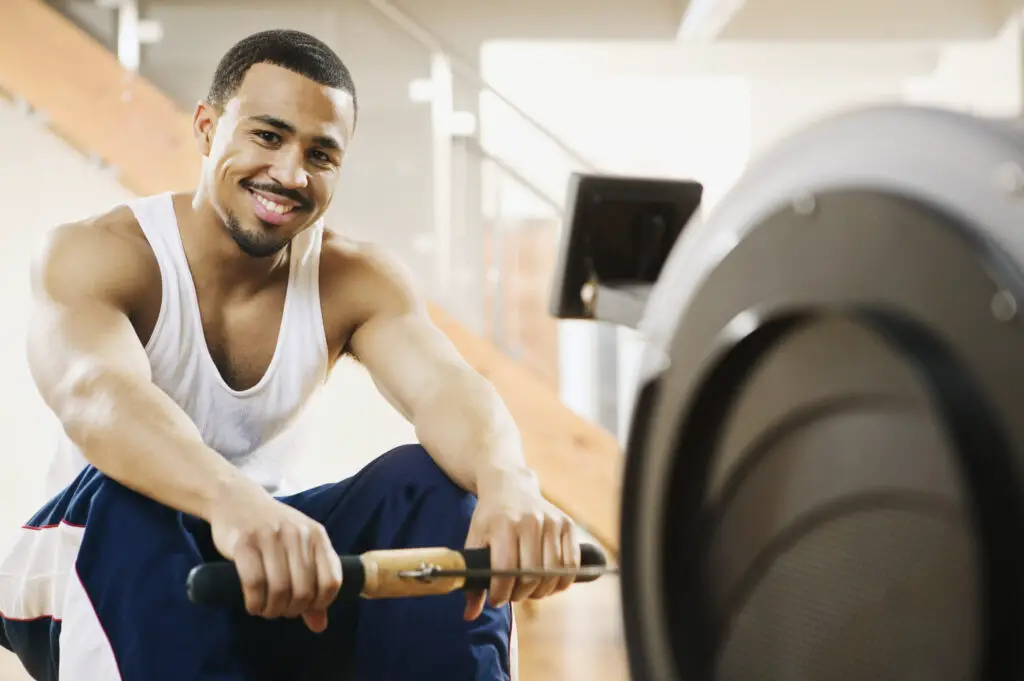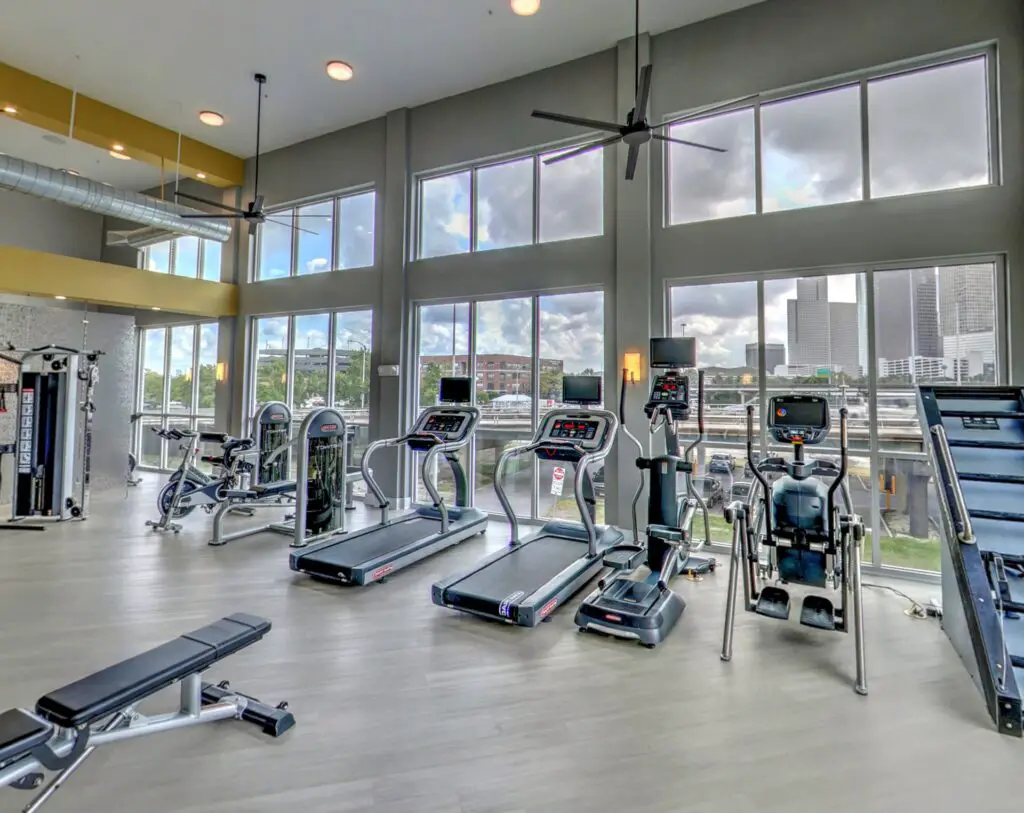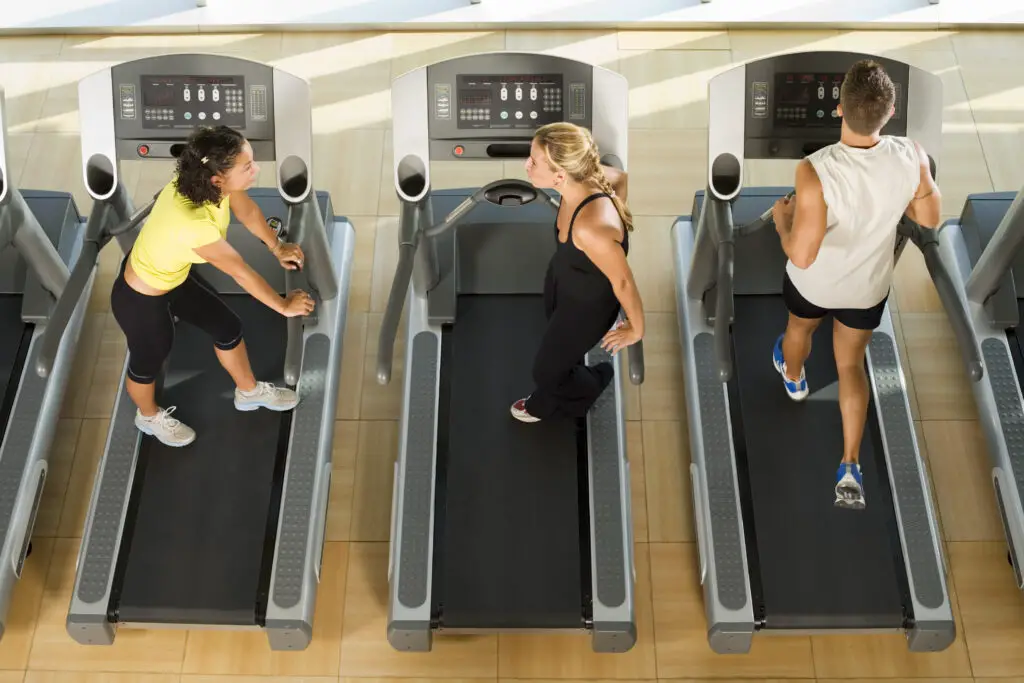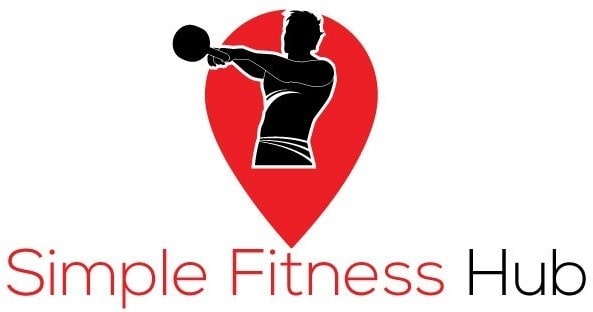In the battle of the rowing machine vs treadmill, you should think about which one can help you burn calories faster or better for muscle buildup. To ensure you can use both machines the right way, we’re listing all the facts you need to know: the basics, similarities, differences, and benefits.
Rowing Machine vs Treadmill: General Overview
The Rowing Machine
A rowing machine is a piece of exercise equipment that lets you emulate the actions of rowers who propel boats through the water. Instead of an oar, you grasp a bar to make rowing movements. You also have to sit on a gliding chair to slide effortlessly.
The first movement requires you to pull with the legs away from the machine. Then, push with your core and arms to get near in front of the machine. Hence, you need to tap your body’s power to row.
Want to feel stronger and more fit in 12 weeks? Sign up for this intensive transformation plan now!

While it’s taken a while for the sport-inspired machine to become a part of people’s fitness, rowing machines are now among the most time-efficient total-body workouts.
The Treadmill
A treadmill is a workout device for walking or running while staying in the same place. It acts as a moving platform with a wide conveyor belt, electric motor, and flywheel. As a result, the machine requires you to walk or run at a pace that matches the belt’s speed.
This machine serves as the closest alternative to walking outdoors. You can also execute climbing motions since most treadmills have an incline feature.
While power isn’t its main focus, a treadmill develops speed and stamina. It also pushes you to maintain proper posture and stride to avoid hurting your back, shoulders, hips, and legs.
Rowing Machine vs Treadmill
Similarities
Cardiovascular Benefits
While both a rowing machine and a treadmill help improve cardiovascular health, you can choose the intensity of how you want to achieve it.
For instance, a rowing machine allows you to do a high-intensity aerobic routine by maintaining long, repetitive strokes to pump blood and boost oxygen flow. You can do this for at least 30 minutes per day to obtain the benefits of a full-body cardio workout.
On the other hand, the cardio benefits of using a treadmill depend on how vigorously you use the machine. A good starting point is to run at a pace of at least five miles per hour daily to gain cardio benefits.
Fat Burning Abilities

The Centers for Disease Prevention and Control recommends 150 minutes of moderate-intensity or 75 minutes of vigorous-intensity physical activity each week to help burn calories. Running on a treadmill and using a rowing machine are great ways to burn around 420 to 510 calories per hour, depending on the intensity.
Both machines require you to move several parts of the body and harness power from different muscle groups. Since they also let you increase the intensity, using them for prolonged hours enables your body to consume calories at a remarkable speed.
HIIT Activity
A rowing machine and treadmill both allow you to perform high-intensity interval training.
A long-distance row with a distance of at least 1000 meters activates 85% of the body’s musculature and hits 65% to 70% of your maximum heart rate. Running on a treadmill at a speed you can maintain for a long-distance enables you to work at 60% to 70% of your maximum heart rate.
Differences
Muscle Gain and Tone
The treadmill targets the lower body, as running is a great way to tone parts of the leg, calves, quads, hamstrings, and glutes. While you can’t build arm strength, you can use the arms to practice balance. Additionally, your core needs to work on stabilization so that you can conserve energy through efficient movements.
Meanwhile, a rowing machine works the whole body: core, upper, and lower. It creates a full-body workout that mainly develops the abs, back muscles, arms, biceps, shoulders, and legs in every push and pull.
Reliability
Treadmills need power, and there’s a possibility you won’t be able to use the machine if there are problems with the tread belt and motors. The belt also tends to wear out in the long run, requiring you to replace it. Rowing machines, on the other hand, don’t rely on anything, just your arms.
Impact

Walking on a treadmill is a low-impact activity, as there’s not much impact on every step you make. Meanwhile, running has a significant effect on the body. Even if the belt isn’t as hard or rough as concrete, your feet will land on a hard surface, which may cause shin splints or stress fractures. To avoid this, wear proper workout shoes for heel pain.
On the contrary, your body has almost zero impact against anything when using a rowing machine. While this is the usual case, you still have to ensure good form. Otherwise, you may suffer from back or joint problems.
Major Distinguishing Factor
While both machines provide low to high-intensity fitness routines, they still differ in the targeted muscle group. A rowing machine works on the entire body, whereas a treadmill focuses on the lower part of the body.
When to Use a Rowing Machine
If you’re after an overall weight loss, it would be better to use a rowing machine as the movements burn fats and keep your metabolism revved up. As you may include the device in an aerobic routine, you can boost stamina, and subsequently, strengthen your immune system.
Aside from that, a rowing machine can give you an equivalent cardio workout to a treadmill while also building muscles. Using the machine is also ideal if you want to train every major muscle group in the body, including the back, shoulders, legs, glutes, abs, arms, and wrists.
When to Use a Treadmill
Using a treadmill is more suitable if you want to focus on training the lower body. If getting in shape and toning lower muscles are your primary concerns, developing a treadmill routine can help you achieve these goals.
Even if you’re not using the whole body, the intensity of running burns a lot of calories, which contributes to losing weight. By increasing the slope, this machine becomes an excellent tool for improving balance and mobility.
The Verdict
Rowing machines and treadmills are both excellent at what they do, yet they also have their unique benefits that can contribute to your fitness goals. At the end of the day, it’s all about listening to what your body needs.
